Through its open data platform, Paris Data, the City of Paris makes a range of datasets publicly available, including election results, the most popular books lent out by public libraries, and real-time information about the availability of Vélib bicycles.
One of the available datasets is a list of the names, locations and lengths of all of the city’s 6486 streets. I thought it would be interesting to look through these and analyse their names and what these represent. I will publish this analysis in a future article. But, as you can imagine, it takes time to go through thousands of rows of data, so it’ll be a while before that’s ready. In the meantime, I wanted to present a few initial thoughts from what I’ve seen so far.
Make sure to sign up to email updates to the blog so you don’t miss the fuller analysis.
A lot can count as a street
I’m working through the list in order of length, starting with the shortest. One of the first things I’ve noticed is that some of the places classified as streets involve bending the definition of street somewhat. Included in the dataset are corridors of the Forum des Halles shopping centre, public staircases, and tiny “squares” at intersections.
An example of the latter is the Place Michel-Petrucciani, named in 2002 in honour of a French jazz pianist, which sits in the triangle formed by the junction of two streets in the 18th arrondissement. All the surrounding buildings have addresses on neighbouring streets, so that when this square was given its name, not one resident saw their address change. It seems that the local authority sees this kind of naming as a way to honour an important or influential person at minimal cost and disruption. But perhaps it can also serve another purpose: one of placemaking. As an anonymous, nondescript crossroads turns into a plaza with a name(and perhaps a bench or some artwork – the Place Michel-Petrucciani features a mosaic of a piano), a “non-place” can become a location.
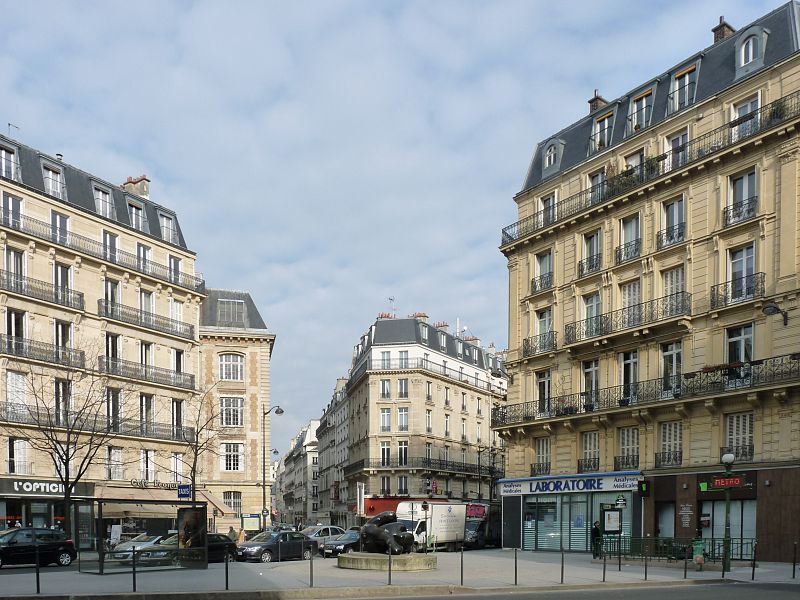
Some streets have especially interesting stories to tell
Some of Paris’s streets date back centuries, and their names allude to this history in often interesting ways. In last month’s article about the city walls, we saw a number of examples of streets whose names reference their defensive history. For example, the rue des Fossés-Saint-Bernard and the rue des Fossés-Saint-Jacques are named after the ditches they replaced; the Place d’Italie is named after its former position as a gate on the road to Italy; and the word “boulevard”, as 115 Parisian streets are officially designated, comes from an old word meaning “rampart”.
Other roads are named after commercial enterprises that once plied their trade there. Parisian shops in centuries past often hung elaborate signs outside to advertise their wares. In an era where most of the population was illiterate, they would use images to identify themselves as uniquely as possible. Some of these became so well known that their streets were named after them: the rue du Renard is named for the “Renard qui prèche” (preaching fox), while the rue du Chat-qui-Pêche, Paris’s narrowest street, is named after a fishing cat.

One street with a particularly storied past is the Place de l’Estrapade, named after a method of torture (the strappado) used there against deserting soldiers and persecuted Protestants. Louis XVI abolished this practice in 1776, but it remains immortalised in the name of the square.
The names of some of Paris’s most ancient streets continue to bear witness to their history as red light districts. The rue du Petit-Musc in the 4th arrondissement is an example. Historians attribute its name to a corruption of “Put-y-Musse”, meaning something like “where the whore hides”. Other examples have since changed name: the rue Gratte-Cul (“arse scratcher”) was renamed in 1881 to the rue Dussoubs, after a revolutionary killed nearby.
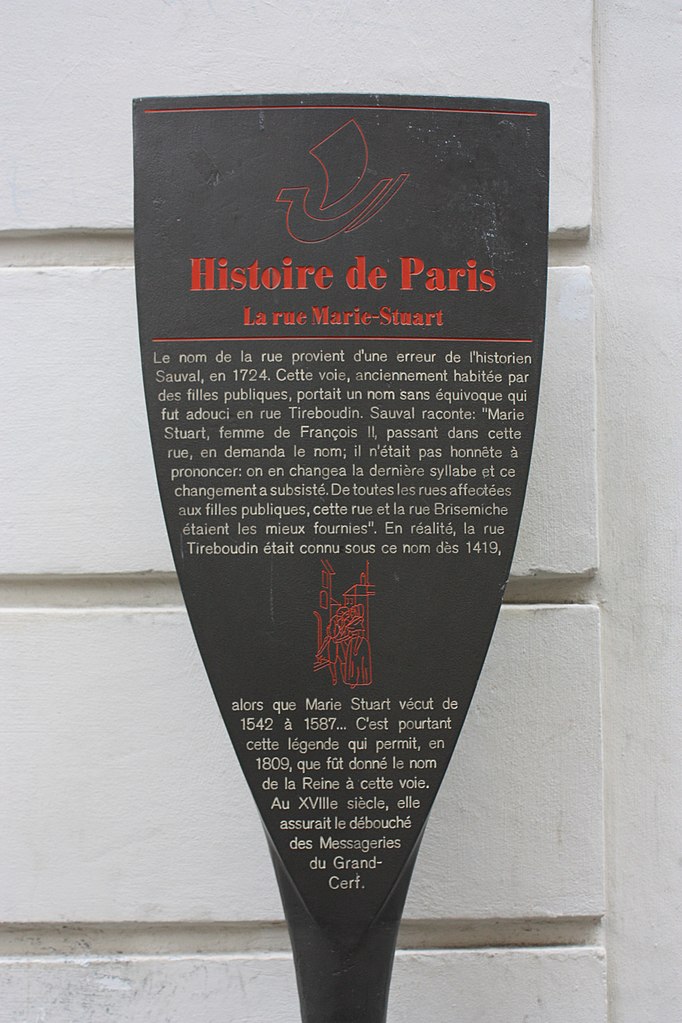
Intersecting with the rue Gratte-Cul stood the rue Tire-Vit (“screw cock” or “knob shagger”), which was also known euphemistically as Tire-Boudin (“pull sausage”). Legend has it that it received this new, less offensive name when the young king Francis II was out walking with his consort, Mary Stuart (usually known in English as Mary, Queen of Scots); she asked him the name of the street and he didn’t want to embarrass her with the vulgar appellation. This story is pure fiction – the name Tire-Boudin predates this couple by almost a century and a half – but it gained widespread popularity, and in 1809 the decision was made to rename the street the rue Marie-Stuart.
Renamings can be rather political
Around the Gare Saint-Lazare in northwestern Paris sit a number of streets named after European cities. Moscow, London and Rome all feature, as do St Petersburg, Edinburgh and Naples – to name just a few. Berlin used to be included, but after war broke out in 1914, the rue de Berlin was renamed after Liège, in honour of the resistance of the people of the Belgian city during the first battle of the First World War. Similarly, the avenue d’Allemagne, across town in the 19th arrondissement, was renamed the avenue Jean-Jaurès, after a pacifist politician assassinated just before the outbreak of war.
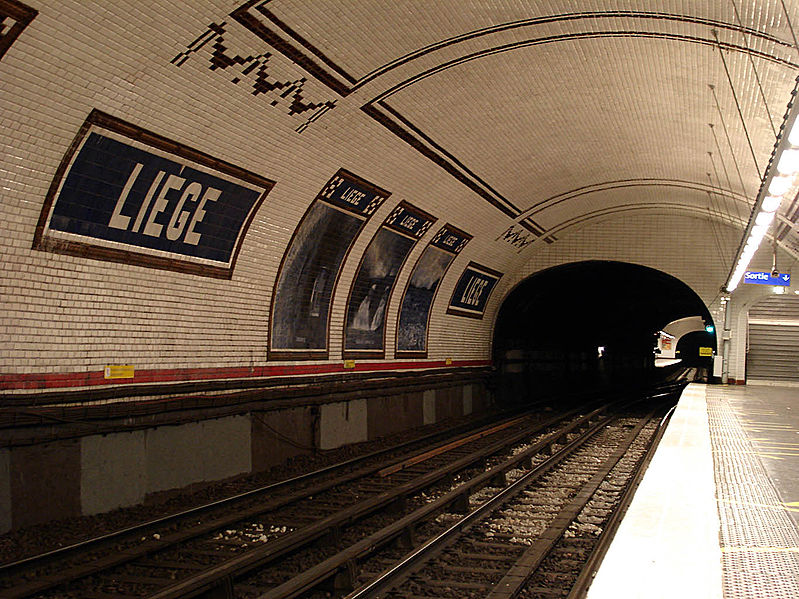
A similar name change occurred with the avenue de Tokio. This important avenue, which runs along the river in the 16th arrondissement, was named after the Japanese capital in 1918, after a war in which Japan fought with the Allies. However, Japan was on the opposing side in the Second World War, so the street was renamed in 1945, this time after New York. The former name lives on in the Palais de Tokyo, a building housing two contemporary art galleries.
The politics of specific people can come into play too. It’s more or less universally accepted to name streets after French statesmen such as Charles de Gaulle and Georges Pompidou, or wartime leaders of allied countries such as Woodrow Wilson, Franklin Roosevelt and Winston Churchill. But other proposals have proved controversial: after Margaret Thatcher died, the centre-right UMP proposed naming a street after her; this was met from the far left with a proposal to honour IRA prisoner Bobby Sands instead. Neither went through.
Many towns in the suburbs have named streets after personalities like Lenin and Marx, but this hasn’t happened in Paris itself. For decades, however, there was a Place de Stalingrad, named in 1945 after the WWII battle and renamed in 1993 to the more explicit “Place de la Bataille-de-Stalingrad”. However, the metro station at the site is still simply Stalingrad, a word which on its own could be misconstrued as honouring a murderous dictator.

Surprisingly many are named after landowners…
Some 500 Parisian streets – almost 8% – are named after people who owned the land on which they were built. This came as a surprise to me, since streets today tend to be named after people or events of national or international importance, rather than something as mundane as who once owned the land. Yet many of these streets were created and named as recently as the Third Republic.
…monarchs…
Remarkably for the post-Revolutionary Republic of France, a number of Parisian streets bear the names of monarchs and emperors – both of France and elsewhere. Streets named for pre-Revolution French kings include the avenue Philippe-Auguste, the boulevard Henri-IV and the place François-Ier – not to mention the pont Saint-Louis, named after King Louis IX, who was canonised in 1297. Later monarchs honoured include the rue Bonaparte, the pont Louis-Philippe and the place Napoléon-III.
Some streets were renamed in the Revolution, but later switched back. The quai Bourbon became the “quai de la République” in 1792, but returned to its original name in 1814, immediately after the First Restoration. The quai Anjou was also renamed in 1792, to “quai de l’Union”, but reverted under Napoleon in 1803.
Several British monarchs are recognised: the avenue Victoria was named in 1855 after the queen visited the city hall nearby. This was during the Crimean War, in which the two countries were allies. The avenue George-V was named after the WWI-era king for similar reasons. The rue Édouard-VII bears another king’s name.
Streets memorialising other foreign monarchs include the pont Alexandre-III, in honour of the Tsar of Russia just after the signing of a new alliance with that country in 1892; the cours Albert-Ier, named at the end of the Great War after the King of the Belgians; and the avenue Pierre-Ier-de-Serbie, named after Peter I of Serbia, who fought with the French Foreign Legion in the Franco-Prussian War.
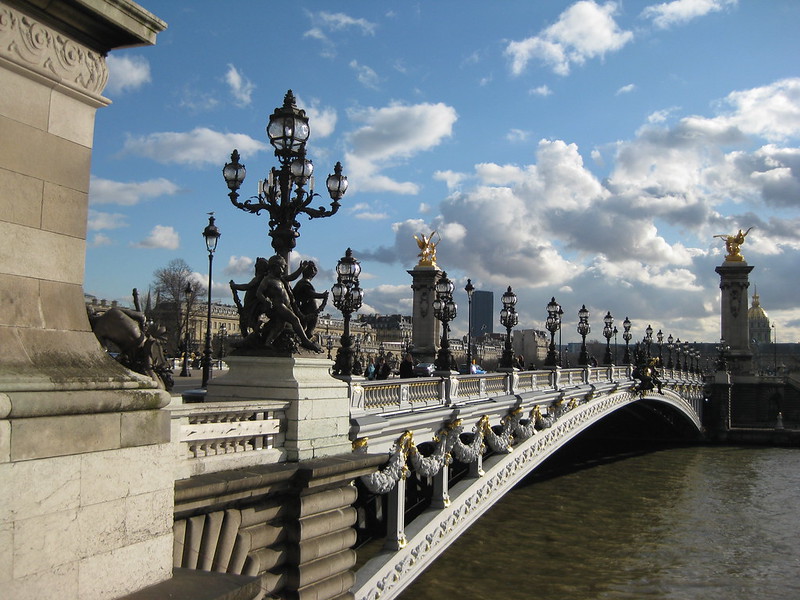
…princesses…
It’s not just monarchs themselves. The place Diana is worthy of special mention. Before 1997, this square didn’t exist as such, but was considered a section of the larger place de l’Alma. A sculpture – a replica of the flame carried by the Statue of Liberty – was placed there in 1989, but the square itself wasn’t given a name until July 1997, when it was named after Greek singer Maria Callas. The following month, the Princess of Wales met a tragic death in the adjacent road tunnel, and the Flame of Liberty, originally intended as “a symbol of the Franco-American friendship”, became an impromptu monument to the people’s princess. The Council of Paris soon wanted to rename it in honour of Diana, but didn’t gain British approval, and the project was initially abandoned. However, signs with the name of Maria Callas were never erected. Finally, in 2019, the square received its new name.

…and saints
Some royals are honoured indirectly, in streets named after their namesake saints. The rue Saint-Charles is named in honour of Charles X, the last Bourbon king, while the rue Sainte-Anne commemorates Anne of Austria, the consort of Louis XIII.
But these are by no means the only streets in Paris named after saints. 254 include the word “saint” or “sainte”. This includes streets named after towns (e.g. rue Saint-Denis) and non-canonised people’s surnames (e.g. rue Sainte-Claire-Deville); but they’re more often named after churches. Although France is famous for its particular form of secularism, apparently naming hundreds of the capital’s streets – and, consequently, no small number of metro stations – doesn’t conflict with the ideals of laïcité.
This is understandable: street names often go back centuries, and even today churches are landmarks which help us navigate the city. Perhaps more surprising is the decision to recognise a recently-departed Pope in the plaza in front of the Notre-Dame, known since 2006 as the parvis Notre-Dame – place Jean-Paul-II. This decision didn’t pass without controversy.
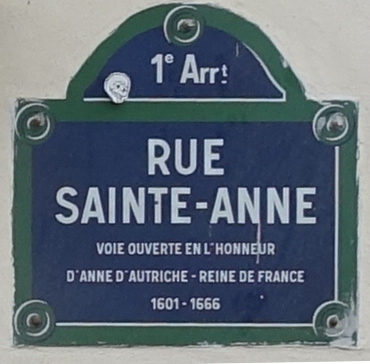
The scene keeps changing
Although not as rapidly developing as cities in other parts of the world – or indeed its own suburbs – Paris’s street layout continues to evolve. The list includes 441 unnamed roads and alleyways, given temporary designations of the form “voie XX/NN” (e.g. “EK/13”). In addition to this, the city keeps creating new “squares” in the manner of the place Michel-Petrucciani and the place Diana. So this is a dataset that is likely to change considerably in the future.
In an upcoming article I will make a more extensive, statistical analysis of the odonyms of Paris. I’m sure to discover more interesting stories along the way. To make sure you don’t miss these, subscribe to email updates below!
 Fabric of Paris
Fabric of Paris